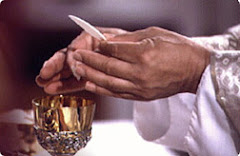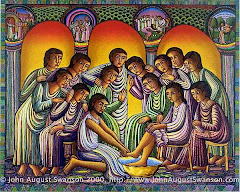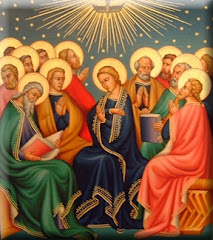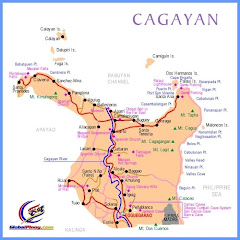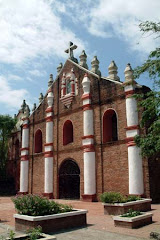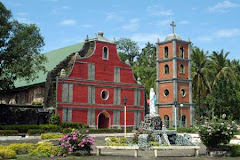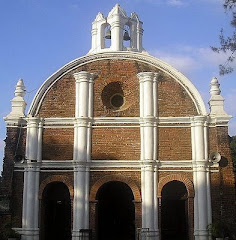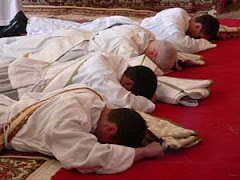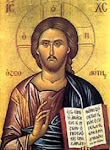A. CHANGES AND FULL
RECONSTRUCTION OF RECORDS
Question 1:
What should the petitioner do if no supporting document with the same date of birth as the baptismal certificate is available? What if only the GSIS papers are available?
Answer:
If no supporting document with the same birth date is indicated on the baptismal certificate is available, then the birth date indicated on the certified true copy of the birth certificate will prevail.
The petitioner should bring to the Chancery Office whatever document is available (e.g., GSIS papers) that supports his/her requested changes. All information will be evaluated and the petitioner will be interviewed at the Chancery Office. The decision to approve or disapprove the request will depend on the results of the Chancery’s investigation.
Question 2:
Where can we get the requirement for the requesting changes/ reconstruction of records and securing clearances?
Answer:
A booklet that contains all the requirements from the Chancery Office of the Archdiocese. Please note that requirements may vary on case-to-case basis.
Question 3:
What are possible corrections for adoption cases?
Answer:
If the adoption took place after the baptism, the names of the adoptive parents are added to the baptismal record as a notation. Thus the baptismal certificate will carry both the names of the biological and adoptive parents.
Question 4:
What is the difference between correcting civil records and church records? What is the basis for the Policies of the Chancery with regards to the corrections and reconstructions of church records?
Answer:
The policies implemented by the Chancery Office regarding the correction of Church records are based on the Canon Law, directives of CBCP and Church Policies, while the policies for the correction of Civil records are based on Civil Law.
Question 5:
Last Year, we had a request to baptize two children. The requesting party was able to present a complete set of requirements. Thus, the children were baptized. However, the following year, a woman, who claimed to be the biological mother of the two children who visited our parish. She presented documents to prove her claim. It turned out that the elder woman, who requested for the baptism of the children, was their grandmother. The biological woman was so angry and threatened to sue our parish. What can we do?
Answer:
The case may be reoffered to the Chancery Office, where the biological mother may be interviewed to present her complaint, and request for partial changes of entries to correct the wrong information on the Baptismal Certificates of the children.
It is unfortunate that the Church has fallen as a victim of deception between feuding family members. Due to this, great emphasis is advised regarding the screening of applicants for baptism and other sacraments. When even a small amount of doubt exists, the secretaries should not hesitate to refer the applicants to the parish priest for further interview and authentication in order to prevent the occurrence of such incidents.
Question 6:
What can be done to correct the wrong date of marriage of parents on a church record?
Answer:
The petitioner may secure from their parish a letter of request for partial change of records and execute a notarized affidavit stating the change. Together with other requirements or proofs, these are submitted to the Chancery Office for evaluation and approval.
Question 7:
On the Full Reconstruction of Records, when the written decree was released, the legitimacy and address of parents were not included.
Answer:
The treatment for each case will depend on the contents of the written request from the petitioner’s parish.
Question 8:
In the Request for Partial Changes, a certified true copy of the birth certificate is one of the documents required by the Chancery office. If the petitioner has an original copy of the birth certificate, is it necessary to secure a new one?
Answer:
To assure the authenticity of the documents presented to the Chancery Office, it is important to make sure that all documents submitted are Certified True Copies of the original. All Certified True Copies of documents are valid only for a period of 6 months from the date of its issuance.
For individuals born in 1990 onwards, the original birth certificate may be accepted provided that there are no alterations or erasures on the document.
Question 9:
The mother’s surname was used on the child’s baptismal records because his parents were not yet married during the time of the child’s baptism. The parents later married, and consequently they wanted they child to carry the father’s surname. Can they simply submit a copy of their marriage contract to request for partial change of entry?
Answer:
A request of Partial Changes of Records maybe submitted to the Chancery Office by the parents of the child. Basic requirements include a letter of request for Partial Change of Records from the parish priest, an affidavit executed by the petitioner sworn before the parish priest stating the correction, a certified true copy of the parent’s marriage contract, and other requirements as deemed necessary by the evaluation from the Chancery Office.
Question 10:
Is the second request for partial change acceptable?
Answer:
In order to save time, effort and resources, it is very important to always advise the petitioner to closely examine their documents and make sure that all entries needing partial change are included in the request. As long as they are able to present sufficient proofs to support the change, you are advised to accept their requests, unless you detect deceit on the part of the petitioner. It is important to always refer cases like these to your parish priest to allow him to properly discern what to do.
Question 11:
A request to remove the “Maria” from the baptismal certificate was presented by two different individuals on separate instances. The request of the first petitioner to remove the “Maria” was denied. Please explain why the two cases were treated differently.
Answer:
All Requests for Partial Changes are carefully deliberated at the Chancery Office to make sure that the dignity of the Church is upheld at all times. The petitioners are assured that the Chancery Office has no biases regarding its decisions.
Question 12:
Can we delete the name “Maria” from the baptismal certificate? Do the DFA and the Chancery Offices coordinate regarding this?
Answer:
Whether or not the request to delete the second name “Maria” from the baptismal certificate of an individual will depend on the result of the investigation conducted by the Chancery Office. Each case is dealt with carefully. No, there is no coordination work regarding this matter between the DFA and the Chancery Offices. The DFA is a government body, while the Chancery Office is a Church body.
Question 13:
Case of change of name. One baptized Catholic requested to change the name on her baptismal certificate from “Rowena Rullon” to “Alicia Watanabe”. The request was endorsed by our parish priest to the Chancery Office and the individual was able to change her baptismal name to “Alicia Watanabe,” after providing all the necessary documents requested by the Chancery. However, after a month this individual returned to our parish requesting that the baptismal name “Alicia Watanabe” be changed back to Rowena Rullon. Is it permissible to request for partial change for the second time? Is it necessary to ask the individual to submit a birth certificate again?
Answer:
It is necessary to investigate this case very cautiously. To discourage individuals from deceiving the Church, in this particular case, the second request for Partial Change is unacceptable.
Question 14:
For full reconstruction of Church records, what number of “Certificate of No Records” from nearby parishes is required? We normally ask for 3 parishes. Is it too many? Is there a circular on this? There are some parishes who refuse to issue such document.
Answer:
The submission of a Certificate of No Records from nearby parishes is not a compulsory requirement. Thus, Canon Law does not state a definite number. The parish priest is free to decide as he deems necessary.
Question 15:
A requirement for the full reconstruction of records is a certificate of no records from the parish priest. Why do some parishes refuse to issue Certificate of No Records?
Answer:
It is the privilege of very parish to permit or decline an application for a Certificate of No Records. The parish priest may refuse to issue one, if there is a doubt about its intended use. In case a request is denied, the petitioner may ask them the reason for its denial.
You may get a list of requirements for the full reconstruction of records from the Chancery office or its website. In addition to a certificate of No Records, a notarized Affidavit with details of baptism or baptism pictures may be submitted as supporting proofs.
B. SACRAMENT OF BAPTISM
Question 16:
In case of sponsors who are not baptized how can we determine, whether or not the sponsor selected have already received the three sacraments- baptism, confirmation, marriage?
Answer:
In case of doubt, the secretaries should make sure that the parish priest performs investigation.
Question 17:
In requesting for a baptismal certificate, why is it necessary to indicate the phrase “For Marriage Purposes” on the document?
Answer:
The “For Marriage Purposes” remark on the baptismal certificate serves to indicate the change of civil status of the individual. It also allows the parish to easily identify if the person has been married in the Catholic Church.
Question 18:
Case. The parents of the child to be baptized are unmarried. However, on the birth certificate, the child used the father’s surname. What surname should the child use on the baptismal certificate?
Answer:
The wishes of parents should always prevail regarding the child’s full Christian name. We suggest that the parents of the child discuss this matter between themselves. RA 9255 allows illegitimate children to use the surname of their father “if the filiation has been expressly recognized by the fa6her through the record of birth appearing in the civil register, or when an admission in a public document or private handwritten instrument is made by the father.” Otherwise, the mother’s surname is used.
Question 19:
If a baptized child follows the mother’s surname, does the child have to use the mother’s middle name as well?
Answer:
If the mother’s surname is used, there is no need for a middle name.
Question 20:
Is it right not to indicate the name of the father on the baptismal request due to some personal reasons?
Answer:
As they say, it takes two to tango. It takes man and a woman to conceive a child, thus a child will always have biological parents. If for some reason the mother does not want to include the name of the father on the baptismal record, refer this case to your parish priest for further verification.
Question 21:
Where can we get the baptismal certificate of children who were baptized through emergency baptism? Can they be baptized again?
Answer:
There are provisions in the Canon Law related to emergency or conditional baptisms. A baptismal certificate may be issued also for conditional baptisms to include a remark that the baptism is conditional.
Question 22:
On baptism. We encounter cases therein fictitious information on the marriage date of parents and the birthplace of the child are submitted to us, especially when the “hilot” of the midwife fills in the baptism request form. Thus, we request parents to present a copy of their marriage contracts. If the parents cannot present a marriage contract, we automatically use the mother’s surname for the child.
Answer:
Depending on the nature of the case or problems in a parish, the parish priest is free to impose additional requirements to prevent or minimize these problems.
Question 23:
Who are covered by the adult baptism? Can children who are 8 years old and below be included for regular baptism?
Answer:
Baptisms of individuals with age 7 years old and above are classified under adult baptism. Baptism of individuals below 7 years old are classified under regular baptisms.
Question 24:
In one request for baptism, there is a discrepancy on the date of marriage of the parents on the marriage contract and the birth certificate of the child to be baptized. What can we do about this?
Answer:
Before baptism, it is important to know whether or not the parents of the child to be baptized are legally married. This will have an effect ohm the surname of the child that should appear on the baptismal certificate. The date of marriage is useful reference, but it is not a necessary information. However, for verification purposes and to determine the truthfulness of the parents, you may ask them to explain the discrepancy in information.
Question 25:
Can the birthplace be also indicated on the baptismal certificate?
Answer:
In the format used by the Catholic Church for baptismal certificates, the birthplace is not a mandatory information. However, if this information is necessary, the parents may request that this information be stated on the baptismal certificate.
Question 26:
On baptism or confirmation. Is it possible to have a child, who is two years and above, to be baptized or confirmed in another parish- one that does not cover their place of residence?
Answer:
As much as possible, parents are advised to have their children baptized in the parish nearest to their place of residence. However, depending on the reason given by the parents to the parish, this practice is allowed in many churches.
Question 27:
Can a child use the father’s surname on his baptismal certificate, if parents are married civilly?
Answer:
Yes, of course. A civil marriage is a marriage recognized by the government and is civil in nature. A Catholic church marriage is a marriage recognized by the Catholic church and is sacramental in nature. Since the Philippines is a predominantly Catholic country, the Catholic church extends extra service to its faithful by taking the task of registering the marriage at the Local Civil registrar. Thus, a Catholic marriage is both valid sacramentally and civilly.
Question 28:
Is it possible to issue a baptismal certificate if the Baptism is a conditional one?
Answer:
Yes, a baptismal certificate can be used even for a conditional Baptism. However, it should be noted on the certificate that the Baptism is conditional.
Question 29:
What if the parents of a child to be baptized requests to put all the names of additional sponsors (i.e., say 28 additional sponsor) at the back of the baptismal certificate? What is the best explanation to dissuade them from this practice?
Answer:
The baptismal sponsors are called the godparents of the baptized child, and they serve as the child’s second parents. Thus, the church requires only 2 main sponsors. However, for varied reasons and at times, even commercial purposes, it has become a very common Filipino practice to invite more than 1 sponsor. To dissuade parents from this practice, only two names are indicated on the baptismal certificate.
Question 30:
On adult Baptism- particularly 7 years old. Where can a 7 year old be baptized? Is it possible to have the Baptism in another parish?
Answer:
It is preferred that baptism takes place in the parish where the child belongs.
Question 31:
What baptism from other religious sects are accepted in the Catholic Church?
Answer:
The Liber Conversionum contains all those we receive into the Catholic Faith, who were baptized in other Christian faiths, and whose baptism we recognize as valid. The following churches in the Philippines administer a valid baptism:
· Lutheran Church in the Philippines (LCP);
· Philippine Episcopal Church (PEC);
· United Church of Christ in the Philippines (UCCP);
· Iglesia Evangelica Metodista en las Islas Filipinas (IEMELIF);
· United Methodist Church in the Philippines (UMCP);
· Convention of Philippine Baptist Church (CPBC);
· Presbyterian Church;
· Seventh-Day Adventist Church.
It is important to note that those whom we receive from the preceding churches no longer need to be baptized again, only the other parts of the baptismal rite may be completed. Furthermore they will be required to pledge before the priest their profession of faith.
Question 32:
Can couples who are living together be baptized?
Answer:
The Catholic Faith is open to all those who would like to embrace it. Adults who desire to be baptized maybe baptized after undergoing Catechism about the faith. In addition, all baptized Catholics, who live as husband and wife without the benefit of a Catholic marriage are encouraged to receive the sacraments of Marriage as well.
C. SACRAMENTOF CONFIRMATION
Question 33:
In our confirmation books or Liber Confirmatorum, there is a column called Locus Originis (Parochia/Provincia). What should we write on this column?
Answer:
The Parish Confirmation Book contains the basic information that the parish has to know about the candidate for confirmation. Thus, these informations should be asked on the application form for confirmation, together with other informations that are deemed important by the parish priest. The term Locus Originis is a Latin term that means Place of origin.
Question 34:
Is it necessary to require an individual to enlist in order to receive the sacrament of Baptism? Is it necessary to require the candidate to submit a birth certificate, parent’s marriage contract and barangay clearance?
Answer:
Baptism is a sacrament. It is important to make sure that those who desire to receive it are given the proper preparations, while ensuring that process and requirements do not become too difficult.
D. MARRIAGE
Question 35:
On mass wedding. There are couples who would like to be married in church but are not available to comply with all the requirements for marriage. For example, it is very common for them to have difficulty in presenting a baptismal certificate. Some do not know whether or not they were baptized in the Catholic Church. Our parish tries to assist them by trying to contact their respective parishes for verification. However, some parishes do not answer.
Answer:
If you have tried to contact a parish but failed, then the curia-to-curia or curia-to-parish communication is advised. Please request for the assistance from the Chancery Office to do this.
A Catholic wedding is only for couples who are baptized under the Catholic Church. Thus, the Couples who are both non-Catholics cannot be married in the Catholic Church, unless they both have a desire to be converted to the faith.
If one party or both parties are baptized Catholics, but cannot present a baptismal certificate or any proof of baptism, you can request the Chancery Office to conduct an investigation on this matter. if proven that the individual is baptized Catholic, then an Affidavit about the Roman Catholic Baptism may be issued in lieu of the certificate.
Question 36:
On mass wedding. What are the requirements on Mass Wedding?
Answer:
The requirements for mass wedding are the same as that for other weddings. If the mass wedding is a Catholic Church wedding, then it should be initiated by the parish and not by politicians, like what happens in many cases.
Question 37:
On mixed marriages. For marriages between a Catholic and a non-Catholic, is it possible to have the marriage within the mass?
Answer:
Yes, it is possible to have the marriage rite within the Mass. The couples have to secure the permission of the Chancery Office and they have to comply with the necessary requirements for mixed marriages, i.e. Disparity of Cult Dispensation. A list of requirements and procedures to undertake should be readily available from the parishes, or you may contact the Chancery Office for more information.
Question 38:
Where do we post the banns-place of baptism where the baptized Catholic to be married is no longer a resident, or the place where the individuals to be married are residents for quite some time?
Answer:
The banns are posted at the parish where the individuals are residents for many years after their 18 birthday.
Question 39:
There is no registry number on the marriage contract, but there is a copy of the contract in the church files. Is the marriage valid?
Answer:
A Catholic Church Wedding is valid sacramentally, according to the laws of the Catholic Church. Here in the Philippines, the Church takes it as its responsibility to register the marriage as the local civil registrar, who is responsible for assigning a registry number, on the marriage certificate. Thus, the marriage is valid civilly as well.
However, the absence of the registry number on the marriage certificate indicates a possible clerical error, which the couple has to pay attention to. Or that most probably the couple was civilly married prior to the Church wedding, in which case the civil marriage certificate would indicate a registry number and not the Church wedding certificate.
Since there is a copy of the marriage certificate on the Church file, then we can be sure that a marriage ceremony was held on the date specified on the marriage contract.
Question 40:
In one case of our parish, a fellow who is about to be married presented a birth certificate, a baptismal certificate and a notarized affidavit from the parents stating that the surname of the individual from the birth certificate is wrong and that the correct surname is that on the baptismal certificate. What surname should be used on the marriage contract?
Answer:
It is important to check all the documents presented by the individual to verify consistency of information. This includes checking the name stated on the marriage license as well. If the individual claims that the surname on the baptismal certificate is the correct one, then the marriage license should also indicate the same surname. In addition, if the affidavit was prepared by the individual’s biological parents, then the three of them should have the same surname.
Question 41:
Can a non-Catholic, who had a previous marriage with a non-Catholic, remarry in the Catholic Church?
Answer:
Yes, provided that the person has all the necessary papers providing the nullity of his previous marriage by the Roman Catholic Church, and provided that the said person is marrying a Roman Catholic.
Question 42:
Can a couple who are both non-Catholics be married in the Roman Catholic Church?
Answer:
No, unless they have a sincere desire to embrace the faith and be baptized.
Question 43:
On mixed marriage. The man is born again Christian, while the woman is a baptized Catholic. Can they marry twice, that is, marry at both the Born Again and the Catholic Church?
Answer:
No, the provisions of Can. 1127 &3 forbids a couple to marry twice in both Churches. They can either marry in the Catholic Church or in Born Again church.
In the event that they chose to marry in the Born Again church and would like to have their marriage acknowledged by the Catholic Church, they could ask a dispensation from the Canonical Forms BEFORE the celebration on their wedding in the other religion. Please contact the Chancery Department for more information.
Question 44:
For couples who are already civilly married, is it necessary for the foreign partner to secure legal capacity or embassy clearance in order to marry in the Catholic Church?
Answer:
There is no need for legal capacity or embassy clearance, but a certified true copy of the civil marriage certificate is necessary.
Question 45:
For marriages between a Filipino and a foreign partner. If one party in a marriage belongs to a parish within the Archdiocese of Tuguegarao and would like to marry in another diocese/archdiocese- who issues the dispensation?
Answer:
The diocese/archdiocese where the church of the marriage belongs.
Question 46:
What kind of dispensation is needed for marriage between a Roman and-Catholic; for marriage between a Roman Catholic and a non-baptized?
Answer:
For a Roman Catholic and non-Catholic, a Permission from the Local Ordinary for Mixed Marriage is necessary. For a Roman Catholic and non-baptized, a Disparity of Cult Dispensation is necessary.
Question 47:
What are the basic do’s and don’ts for parish secretaries?
Answers:
DO show patience and courtesy, especially when answering inquiries. Your answers serve not only to inform, but also to catechize.
DO consult your parish priest for matters not familiar to you, especially those concerning canonical matters. You may also call the Chancery Department for clarifications.
DO your work quickly but efficiently. Time is precious and you cannot bring back lost time.
DO remember to serve with a smile.
DON’T make compromises with document requirements for sacramental rites. Very often couples or applicants forget things when their business is done.
DON’T just deal with marriage coordinators. It is important to request for the bride and groom’s presence.
DON’T let name dropping affect your dealings with people coming to your parish office.
DON’T mishandle canonical books. These are not only private, but also holy records, and should be handled with utmost care by authorized personnel.
Question 48:
Does the Chancery office have any plans for centralized archiving of church records such as baptismal, confirmation and marriage certificates, just like the NSO of the government? It can always require the parishes to submit a copy of these records for this purpose?
Answer:
The function of the Archdiocesan Chancery Office is described by the Canon Low and as of now, it does not cover any centralized archiving of church records such as baptism, confirmation and marriage certificates. Besides, it is always easier to search for information or documents on a parish level than on a diocesan level because there are less number of records. The basic information about a Catholic individual’s baptism, confirmation and marriage records are very important elements of the person’s Catholic Cultural Heritage. Thus, during Catechism before the Sacrament is given, role of parents as archival custodians of the church records of their children should also be stressed.
Question 49:
In how many days do we need to update the Marriage or Baptism Book? How many days should it take before we can release the certificates?
Answer:
It is good practice to daily update the Church books to prevent records from getting lost. If possible, it is also good practice to immediately issue the certificates right after baptism, confirmation of marriage rite to help the parents or individuals concerned save time and money by having to come back to get them.
Question 50:
Before issuing Church documents from the parish, is it necessary to request for an authorization letter if a representative of the individual concerned is making the request? This often happens when the individual is out of town or out of the country.
Answer:
Yes, it is good practice to request for an authorization letter before using a Church document to a representative of the individual. This is to make sure that the document will not be used without the knowledge of the individual who owns it.








